The first use of the overrunning exposed third rail in Chicago was on the intramural railway that transported fair goers around the Columbian Exposition, World's Fair in Jackson Park in 1893. Then one of the four elevated companies, the Metropolitan adopted the same system. The South Side and the Lake Street companies soon converted from steam and they too adopted the same system. The Northwestern Elevated followed suite. The design's origin is from the United Kingdom.
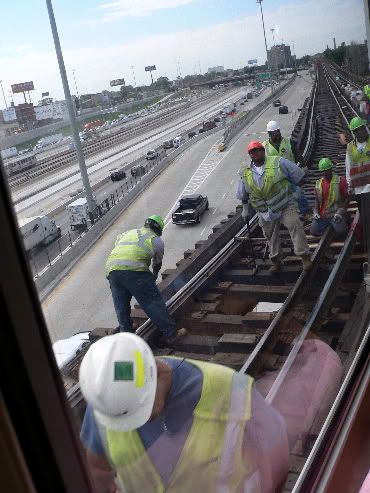
Among these workers on the Green line at 59th ST, check out the one kneeling next to THE RAIL. Yes, the red thing is an insulated cover the workers use, so he's protected.
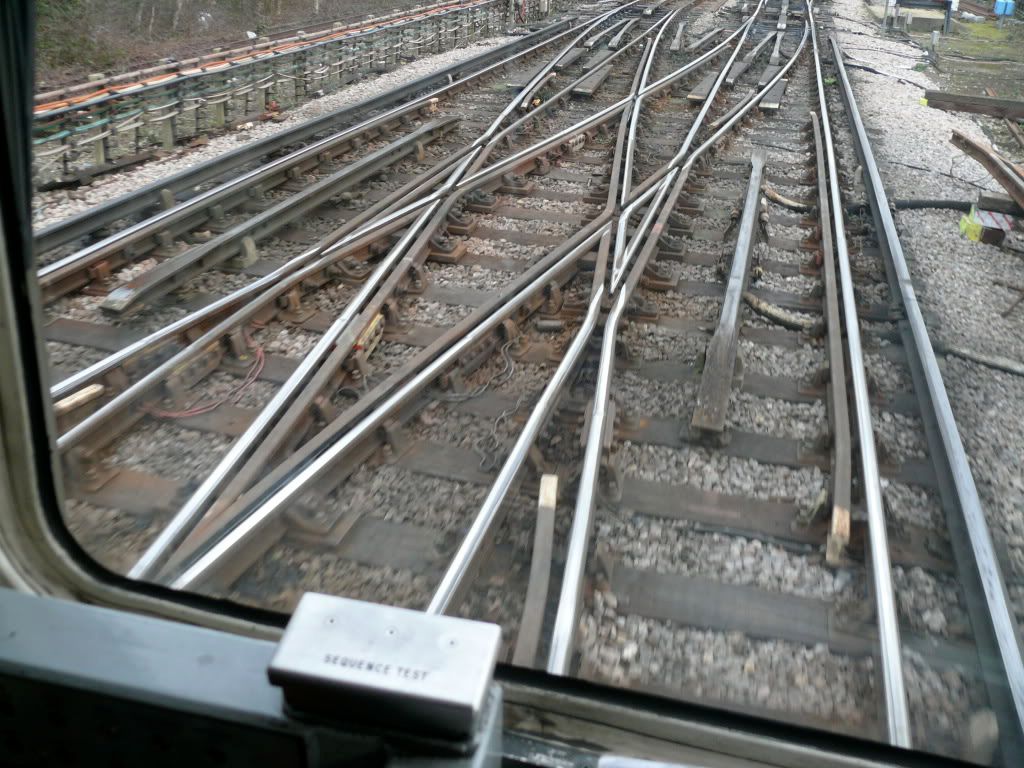
Here's a real comparison photo taken from the head car on London's Underground. That's right...there are TWO third rails, one positive and one negative return, and both exposed of course.
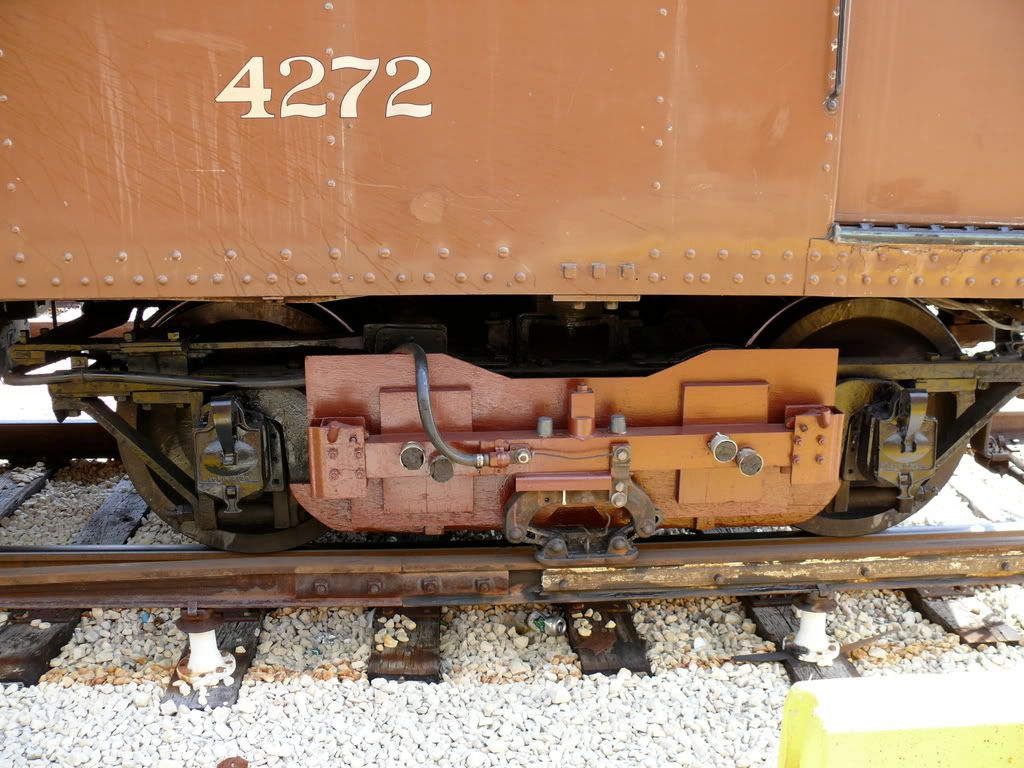
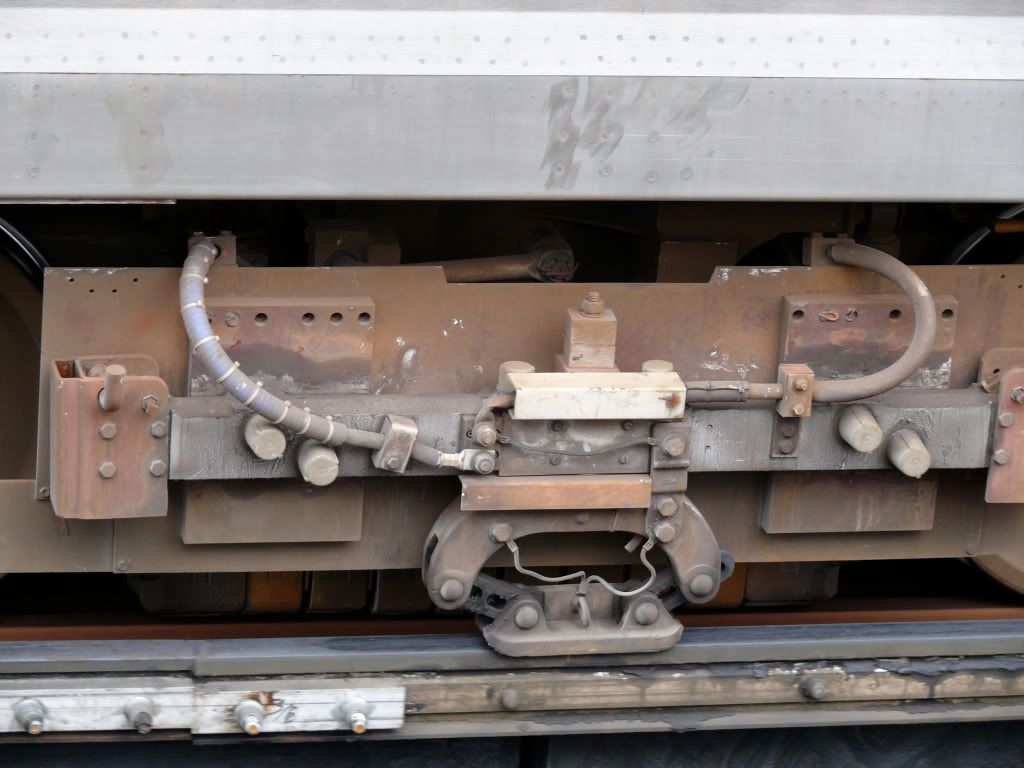
I was going to ask you to tell which was which, but that would be too easy. So instead we'll just say that these two photos show what a difference 70 years DOESN'T MAKE. Here is the trolley block, sleet scraper assembly and third rail pick up shoe on a 4200 from the 1920s and a high performance car from the 1990s.
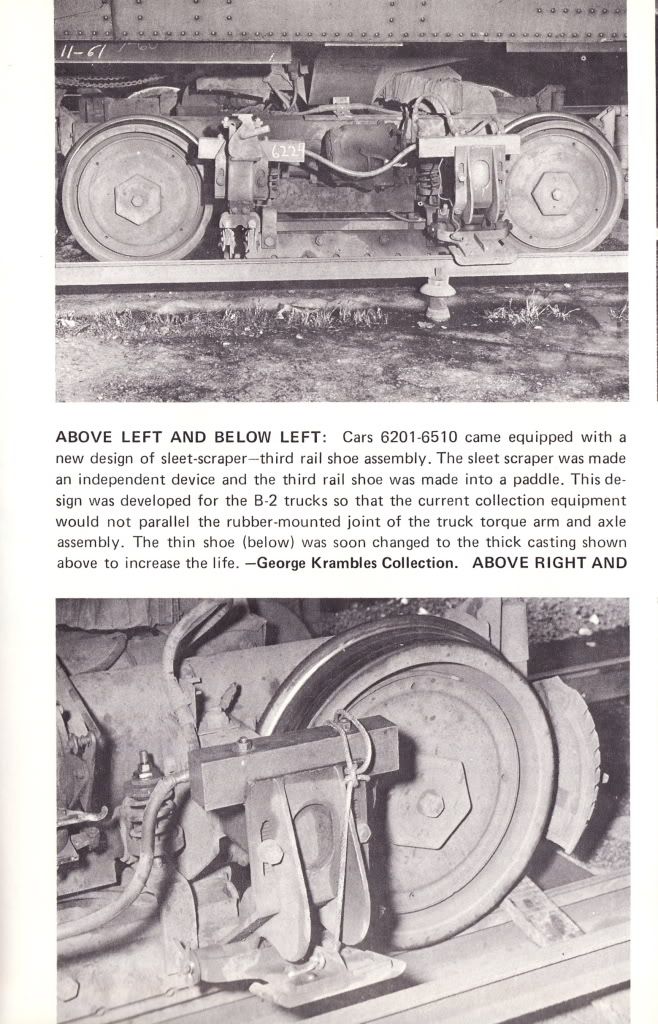
Photo from CERA Bul. 115
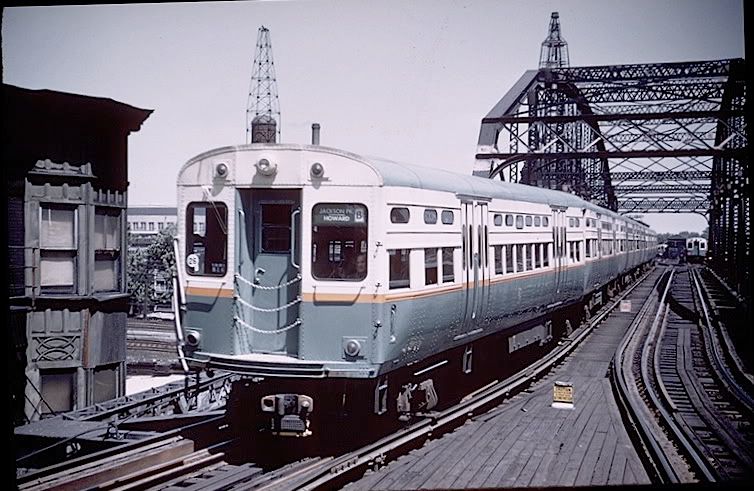
Photo Joe Testagrose/ "L".org
Besides the 150 car Budd 2200 series, the CTA also had paddle type third rail shoes on the first groups of converted PCC cars, 6201 - 6510. The major fault of the Rail KIng O gauge tinplate model is that this type of pickup was not used. Model manufacturers like the 6201-6270 PCC cars because both cars of the married pair are identical. The 6001-6200 are only identical if modeled with the original conductor's position outside, in between the married pairs. 6511 through 6720 are not identical cars because the conductor's position is only in one car.
David Harrison




 Photo from CERA Bul. 115
Photo from CERA Bul. 115 Photo Joe Testagrose/ "L".org
Photo Joe Testagrose/ "L".org